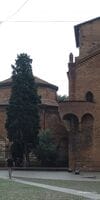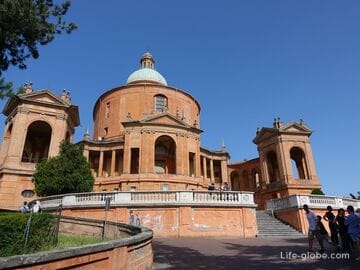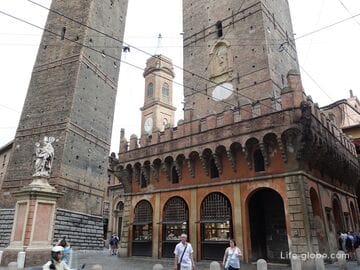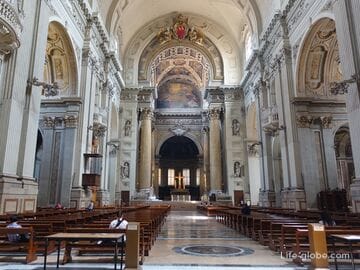St. Stephen's complex or Santo Stefano complex, the full name of the complex of religious buildings of the Basilica of St. Stephen (Complesso di Santo Stefano), also referred to as the Basilica of St. Stefano or the Basilica of Santo Stefano (Basilica di Santo Stefano) - a complex of religious Christian buildings, perhaps the most unusual and voluminous in Bologna.
In people, the complex of St. Stephen known as Cheese Sette - "Seven churches" (Sette Chiese) and "the Holy Jerusalem" (Santa Gerusalemme).
The origin of the complex is very ancient and is still being discussed. One by one, and the most common version, the Bishop St. Petronius (Bishop of Bologna 431 - 450. and the patron of the city) laid the complex above the old pagan temple dedicated to ISIS, to build in it a copy of the Church of the Holy Sepulchre in Jerusalem.
Basilica of St. John the Baptist, called "the Crucifixion", dates back to the 8th century; the Church of the Holy Sepulchre belongs to the fifth century (the inscription on the stone indicates the burial place of St. Petronius); the Basilica of Saints or Saints Vitale and Agricola originated in the 4th century.
In the tenth century, the complex was virtually destroyed during the invasion of the Hungarians. Numerous renovations, including various additions and changes continued until 1880, and was conducted in the first decades of the twentieth century.
Now the complex is a consolidated stylistic uniformity, which makes it the most interesting Romanesque monument of the city of Bologna.
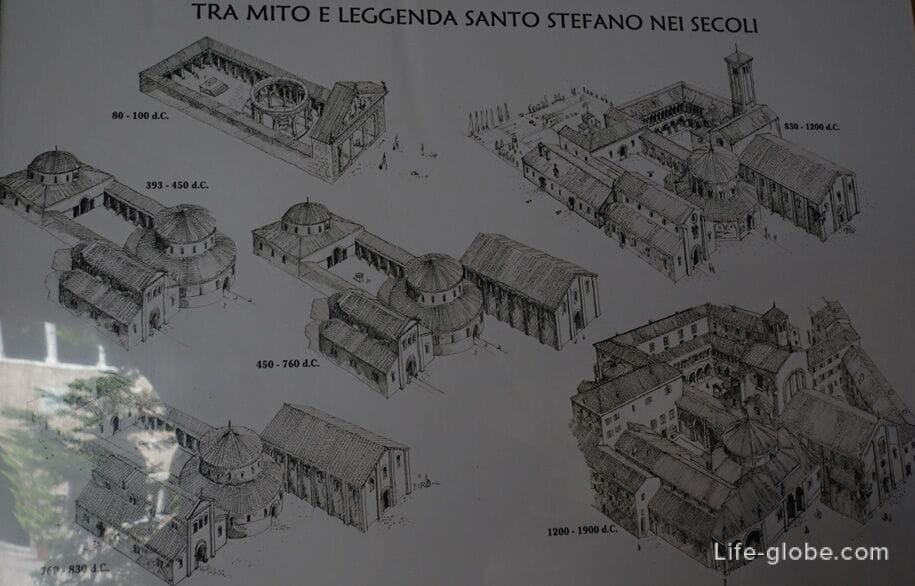
Complex Stephen's, which can be seen today, located on the homonymous square of Santo Stefano (Piazza Santo Stefano).
The square offers views of the facades of three churches: the Church of the crucifixion of Christ or St. Stephen's Basilica (far right), the Church of the Holy Sepulchre (in the center) and the Church of Saints Vitale and Agricola (far left).
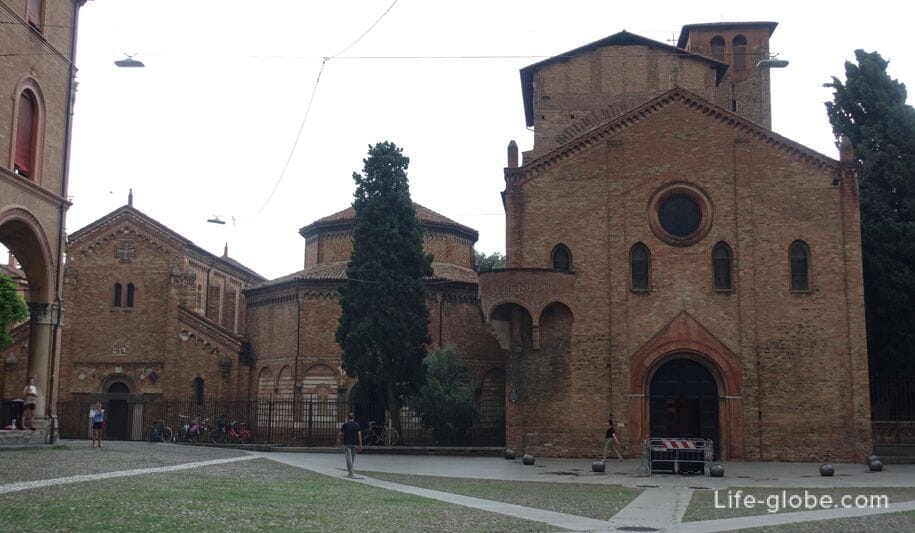
Basilica of St. John the Baptist, called the Church "Holy cross" (Basílica de São João Batista, dita "Igreja do Crucifixo"), consists of a single nave with a raised presbytery over the crypt. In the nave, on the left, is the image of the mother in "mourning for a dead Son" (author - Angelo Gabriello PIO, 18th century).
In the centre of the presbytery, reconstructed in the seventeenth century, which can climb stairs, is the Holy Crucifixion (the work of Simone dei Crocifissi, about 1380). The walls are decorated with 15th century frescoes with scenes of the martyrdom of St. Stephen.
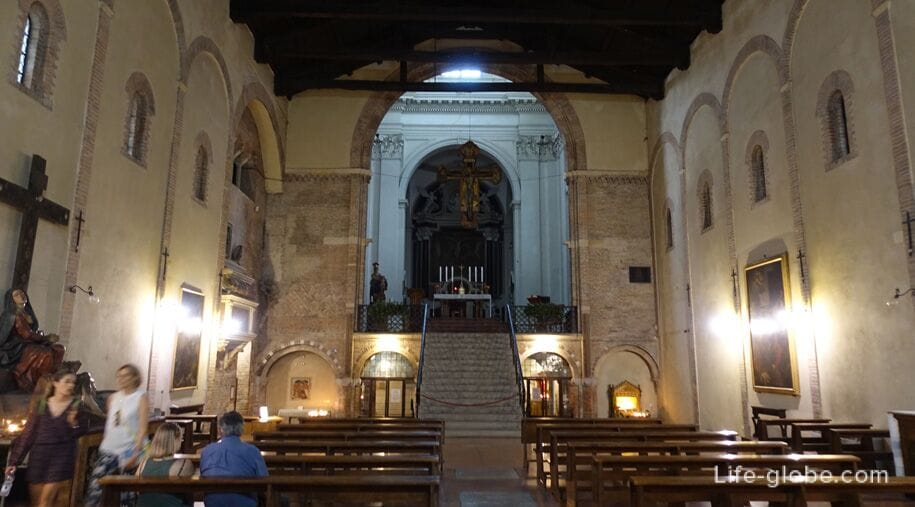
Under the presbytery is the crypt, divided into five small naves with columns of different textures, one of which, according to legend, has a height (from the base to the capitals), is the growth of a Jesus - about 1.70 meters, a substantial altitude for that time.
In a small presbytery at the altar, two urns are the relics of the Holy martyrs Vitale and Agricola, but a travel farmers. On the sides of the altar a few years ago under a layer of plaster was discovered two murals of the 16th century, illustrating the martyrdom of Vitale and Agricola.
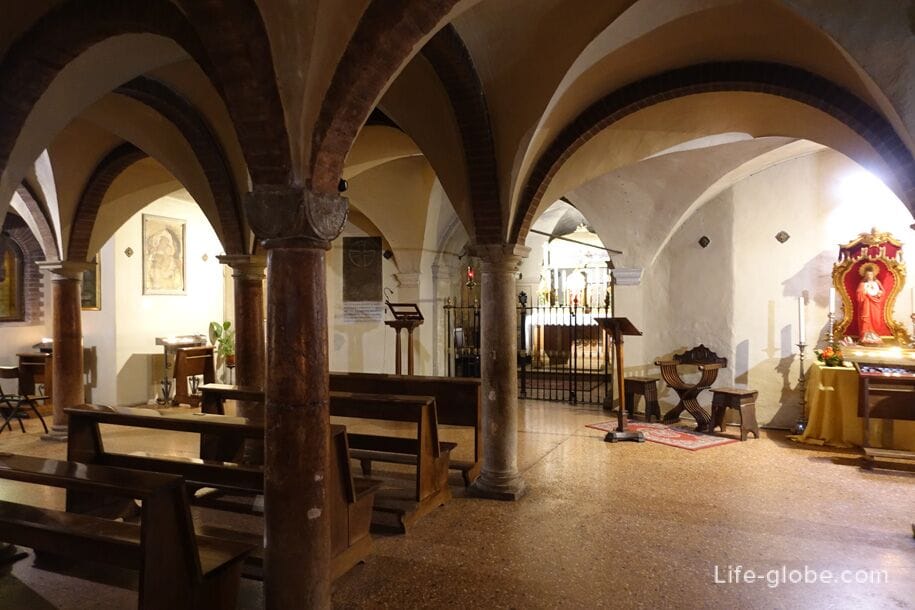
In the left aisle, at the base of the altar, there is a small fresco of the 14th - beginning of 15th centuries, depicting the virgin called the Madonna della Neve (the work probably of Italian artist Lippo di Dalmasio).

Basilica of the Holy Sepulchre (Igreja do Santo Sepulcro) is the Central building of the complex, built in the irregular octagonal form, as a simulacrum of the tomb of Constantine in Jerusalem.
Inside the Church there are 12 columns of marble and brick, in the center of the cult room, representing the Sepulchre in which the relics of Saint Petronius, discovered in the year 1411. In 2000, the cardinal Archbishop Giacomo Biffi moved the remains of San Petronio, in the Cathedral of San Petronio on Piazza Maggiore, where at that time was already the head of Petronius.
Behind the Tomb are:
historical the well, symbolizing the Jordan river. From the point of view of archaeology, the source goes back to the "Holy spring" of the ancient pagan temple, dedicated to ISIS, which most likely stood on the site of an earlier Church. This fact is confirmed by the presence of a source of natural water in the temple is required in the cult of the Egyptian goddess;
- the column of black marble, of African descent and Roman period, symbolizing the pillar of the flagellation.
In ancient times prostitutes of Bologna at dawn on Easter went to the Holy Sepulchre, in memory of Santa Maria Magdalene. There they said prayers, the content of which they never revealed. According to another ancient tradition, pregnant women Bologna did thirty-three laps around the tomb of the Lord (in memory of thirty-three years of the life of the Lord).
Once the walls of the Church were decorated with frescoes of the 13th century, depicting biblical scenes. The frescoes were almost completely removed during restoration works in the early 19th century and replaced by frescoes in the Baroque style in turn deleted in subsequent restorations in the late 19th century. What remains of the original frescoes of the 13th century, now kept in the Cathedral Museum.

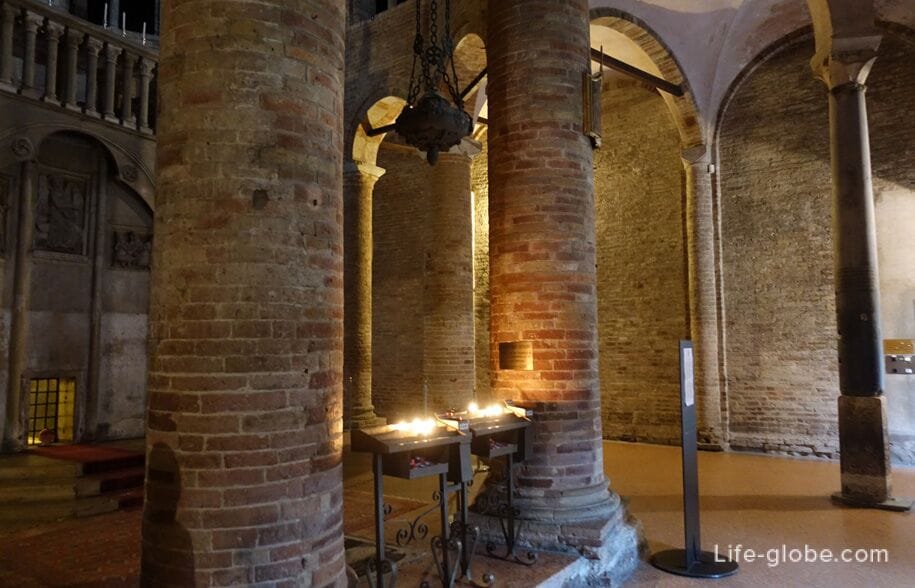
Basilica of Saints Vitale and Agricola (Basílica dos Santos Protomártires de Bolonha Vital e Agrícola) is the oldest of the whole complex, made in the ordinary form and dedicated to the Holy martyrs Vitale and Agricola persecutions of Diocletian (305 a).
In the early 15th century the walls of the Basilica were found Paleochristian tomb with the inscription "Simon." Then spread the rumor that this is the grave of Simon Peter, that is Cvyatogo Peter. News, devoid of any historical basis, has attracted many pilgrims, divert, thereby, their from Rome. The Pope, Eugene IV, reacted sharply to this news and filled the Church the ground, leaving her in this state for about seventy years. Subsequently, through the intercession of Archbishop Giuliano della Rovere, the Church was restored and reopened for worship.
Inside the Church there are several interesting finds: the remains of a Roman mosaic floor, visible through the glass; two early medieval sarcophagus, attributed to the martyrs Vitale and Agricola, with figures of animals (lions, deer and peacocks), located in the two side apses; the cross, identified as the martyrdom of St. Agricola (in fact, the cross refers to a later period), located on the wall in the right aisle.
The main altar of the Church taken from the pagan altar set at the rear of the wall in accordance with the traditional Liturgy, where the priest performs rites in the same position as believers - the direction of the body to the East (or apse).
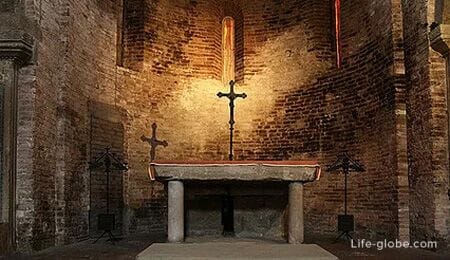
Pilate's courtyard (Pátio de Pilatos) is the place where according to legend, was condemned by Jesus.
On the North and South of the courtyard is bordered by two porches in the Romanesque style with its characteristic cruciform columns made of brick. In the center of the courtyard is a limestone pool, leaning on the pedestal of the 16th century, the so-called "Catino di Pilato". The pool is the work of Longobarda dated 737-744 years, and has the inscription.
The portico has some tombstones, including one with a pair of these scissors in the center belonging to the tailor.
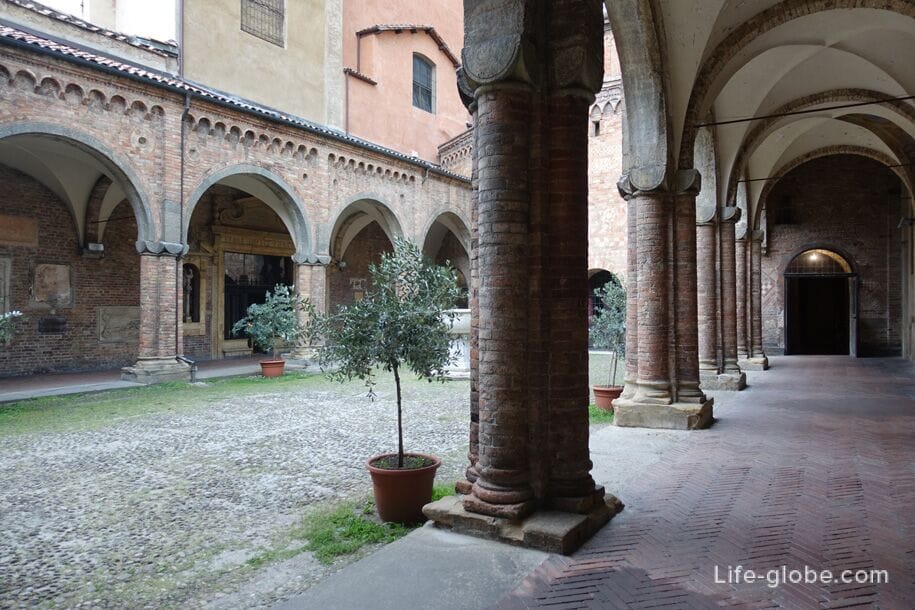
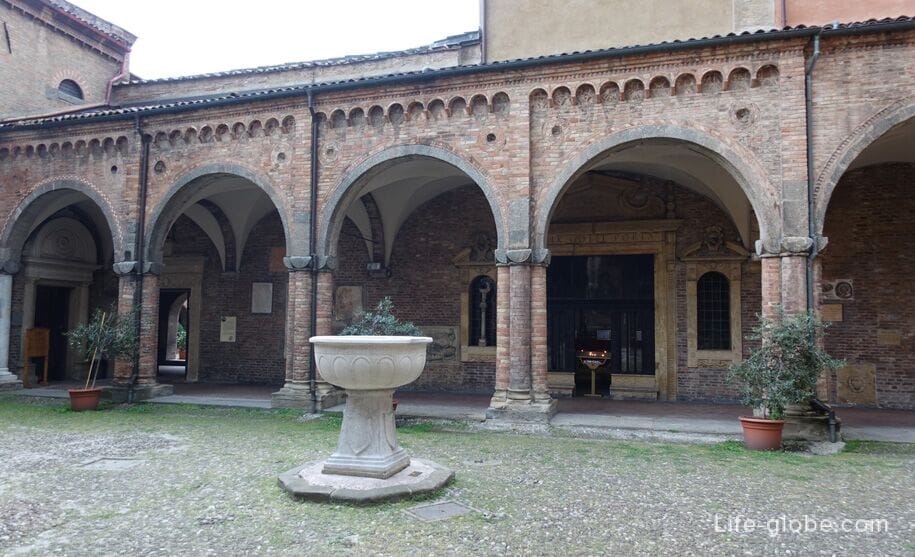

View of the courtyard of Pilate and the Church of the Holy Sepulchre

In the complex of Santo Stefano are the chapel, go to the part of which of the courtyards:
- the Cappella della Consolazione Madona (Madona cappella della Consolazione), 14th century;
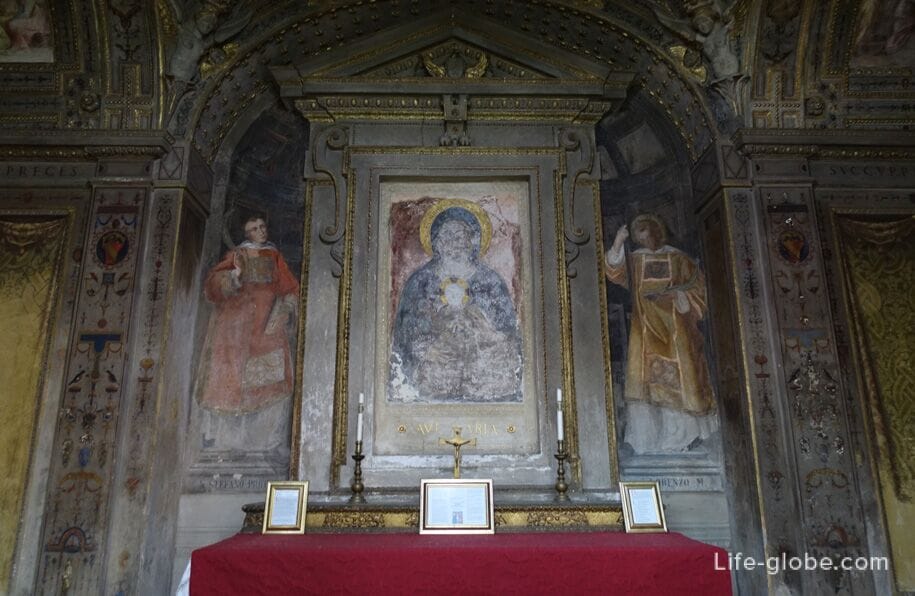
- Cappella di Santa Giuliana (cappella di Santa Giuliana), 14th century;

casovna of St. Girolamo, dedicated to the Caduti Garibaldini of Emiliani Romagnoli of Sacrario Garibaldino (cappella S. Girolamo this year has been devoted Al Caduti Garibaldini Emiliani Romagnoli Sacrario Garibaldino).
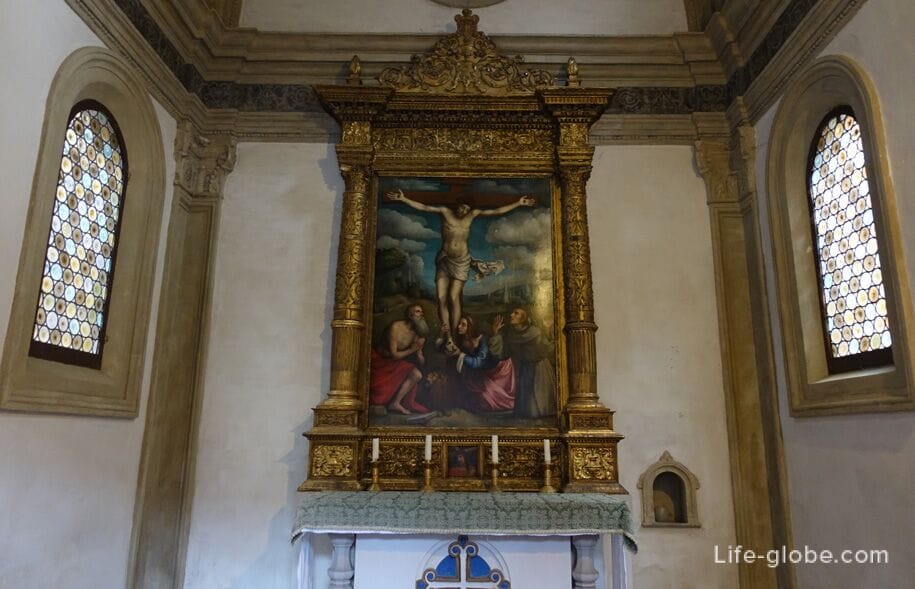
Holy Trinity Church / Trinity Church or Martyrium (Chiesa della Trinità o del Martyrium), also known as the Church of the Holy cross or Calvary, or of the Trinity.
Originally the Church was to be built in the shape of a Basilica with 5 naves, apse before the sacred garden (the courtyard of Pilate) and the facade in the East. Probably due to lack of funds Petronius was not able to finish the building, which remained unfinished. Later, with the advent of the Lombards, the building became the baptistery.
After reconstruction in the late nineteenth century, and at present the Church is divided into 5 naves, the facade facing the courtyard of Pilate, and the apse to the East. Built in neo-Romanesque style as Church of the Holy Sepulchre. From the time of the Crusades and until the 1950's in Central chapel is kept the relic of the Holy cross.
Views of Trinity Church from the courtyard of Pilate
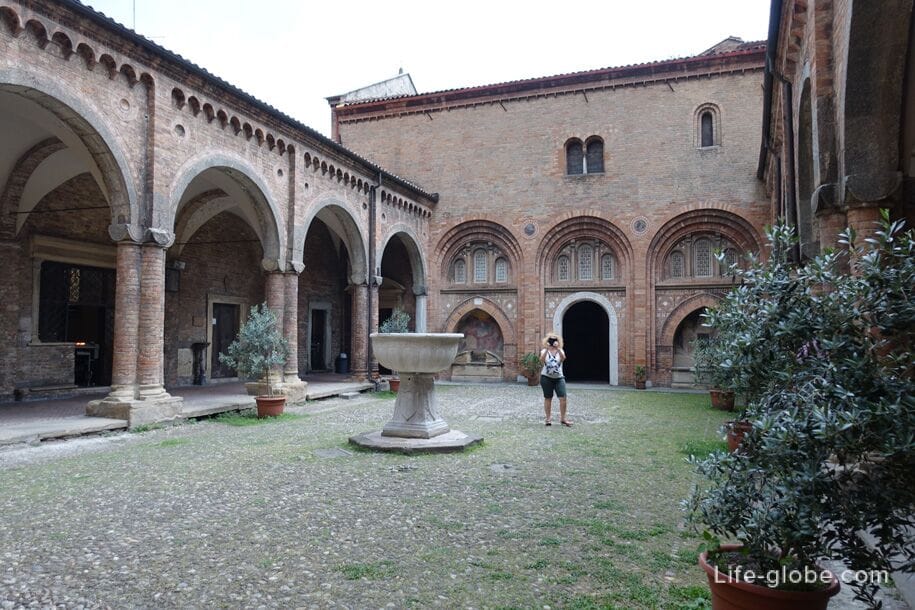
The interior of the Church
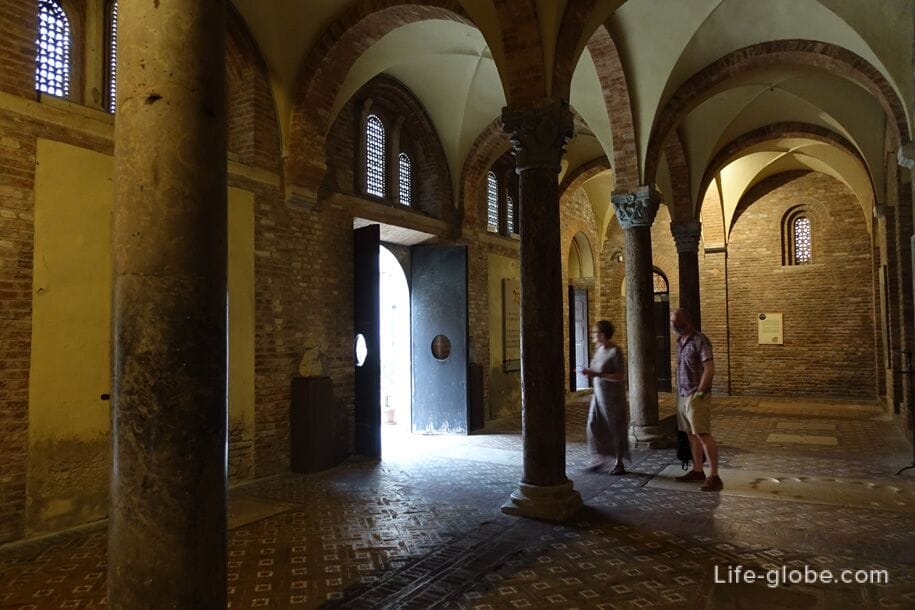
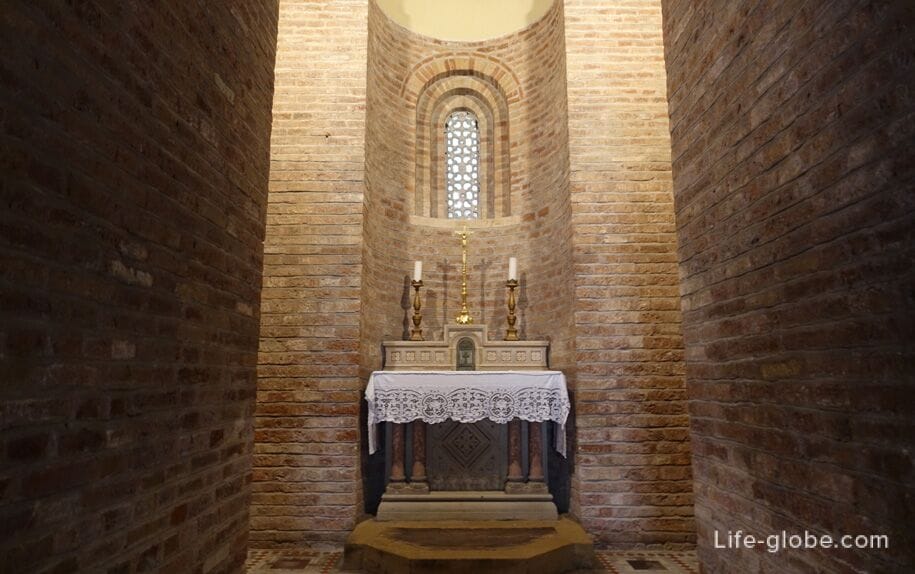
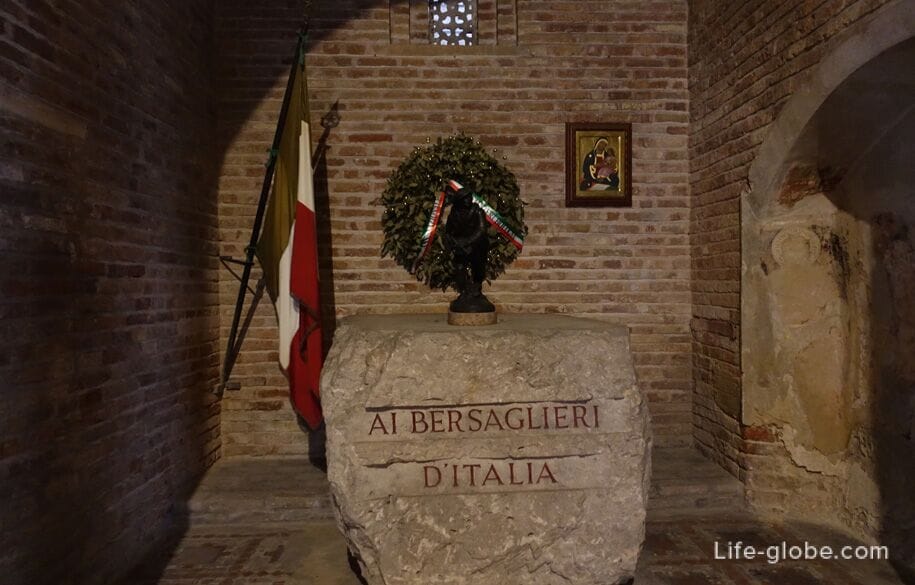
Of special interest in the Church of the Holy Trinity is constantly placed a large wooden panel of the "adoration of the Magi" with the human statues - the ancient cave, located in a small chapel on the right. It is the oldest known Nativity scene, consisting of statues. The song was first cut from logs of elm, perhaps in the last decade of the thirteenth century, author unknown. Over time the Nativity scene has undergone numerous restorations.

The churches also are ancient sculptures and frescoes of the 14th century, in particular the fragment, which depicts Sant'orsola with her companions of the martyrdom and the pregnant Madonna, which, touching gesture touches her stomach, and secondly, hand the virgin holds a book.
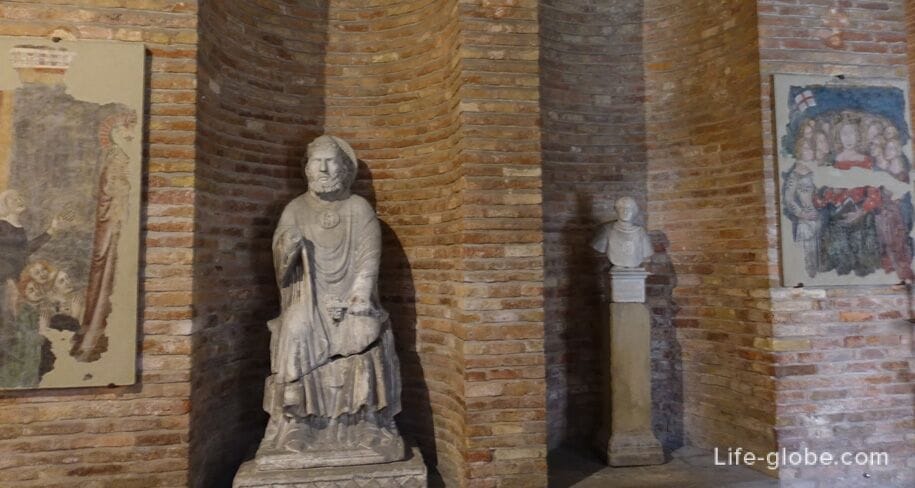
The medieval monastery (Medieval O Claustro) with a courtyard, has two floors: the lower (probably 10th century) with a portico with large arched openings; the upper example of Romanesque colonnade, which was probably the work of Pietro d Alberico mid-12th century.
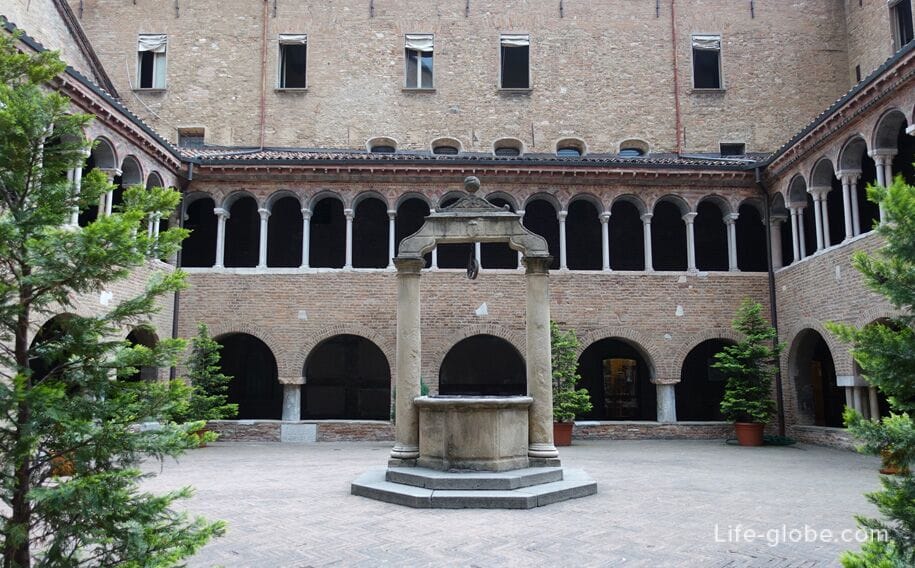
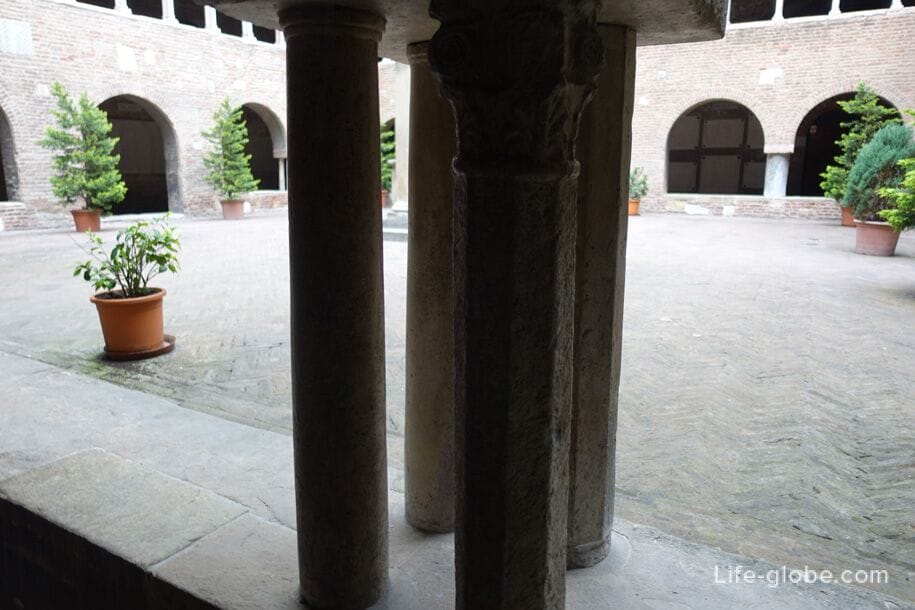
Some interesting columns on the second floor, especially two - one is a naked man on his knees, crushed by the boulder, the other depicts a man with his head rotated 180°.
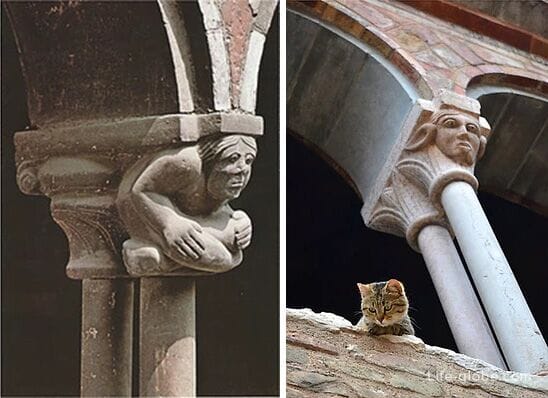
Under the ceilings of the porticoes to the walls of the attached plates with the names of almost all the Bolognese, who died during the First world war, ordered by year military campaign and grouped by the combat zone.
In the atrium of the West entrance to other large tomb stone walls displayed the names of the Bolognese, died during the Second world war.

From the monastery see the bell tower of the complex, originally built in the 13th century and restored in the nineteenth century. Under the portico of the North side of the monastery is the entrance to the Museum of Santo Stefano.
Museum of Santo Stefano / the St. Stephen's Museum (Museo di Santo Stefano), which presented a number of precious religious objects, relics and talari, as well as some works of art.
Of particular interest is the mosaic relief of the age of the Longobards, depicting Jesus among the saints Vitale and Agricola and a fresco of the 13th century, depicting the murder of schoolchildren is part of the decorative cycle of the dome of the Holy Sepulchre.

Scheme of the complex of St. Stephen in Bologna

All accommodation facilities in Bologna, from budget to luxury, you can view and book here




